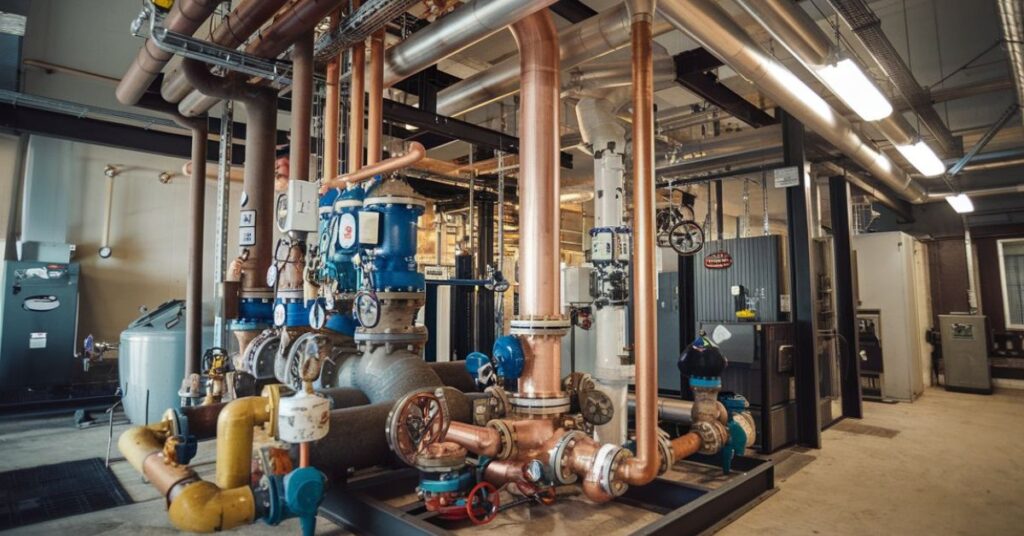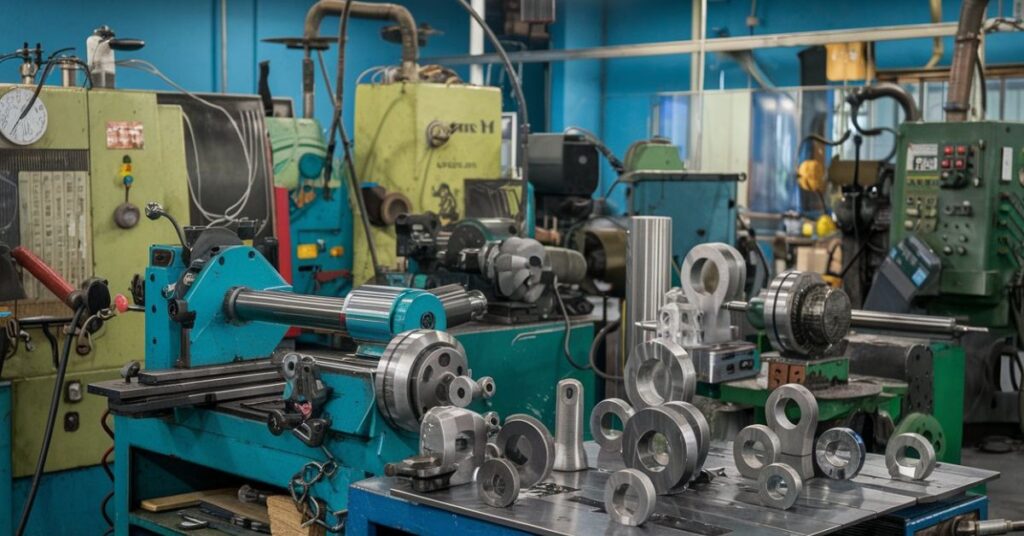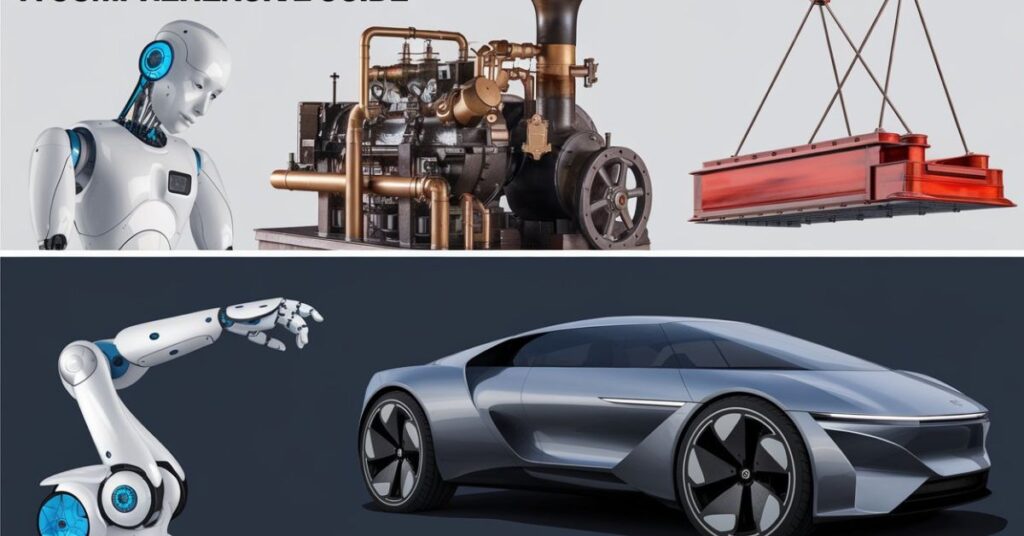The Four Types of Mechanical Engineering is one of the most diverse and long-standing fields in engineering, vital to the development of modern technology and infrastructure. From the cars we drive to the machinery that powers industries, mechanical engineers are responsible for designing, analyzing, and refining the systems and tools that enhance our daily lives. This broad field can be categorized into four main disciplines, each specializing in a unique area of mechanical systems and design. To learn more about these divisions and their significance, check out our detailed guide on the four types of mechanical engineering, where we delve into their roles, applications, and contributions to various industries.
Thermal and Fluid Systems Engineering

Overview
Thermal and fluid systems engineering focuses on the behavior of fluids and their interaction with heat and energy. This field includes thermodynamics, fluid dynamics, and heat transfer, essential for designing and improving systems for energy conversion, transportation, and heat management. Engineers in this discipline work with everything from power plants to HVAC (heating, ventilation, and air conditioning) systems.
Key Concepts
Thermodynamics: The study of energy transfer and conversion between heat and other forms of energy, such as mechanical work. Engineers use thermodynamics to design engines, refrigerators, and heating systems the Four Types of Mechanical Engineering.
Fluid Dynamics: The study of how fluids move and behave under various forces. This is essential for designing systems like pumps, turbines, and piping networks.
Heat Transfer: The process by which heat moves between materials or systems. Effective heat transfer management is critical in designing cooling systems for electronics, engines, and industrial equipment.
Applications
Power Generation: Engineers in this field design and optimize systems for generating energy, such as power plants that use steam turbines or gas turbines. They also work on renewable energy systems like solar panels and wind turbines the Four Types of Mechanical Engineering.
HVAC Systems: Heating, ventilation, and air conditioning systems are essential for maintaining comfortable environments in buildings. Engineers ensure that these systems are energy-efficient and effective.
Aerospace and Automotive Industries: The management of heat and fluids is crucial in designing efficient engines for planes and cars. Engineers ensure that fuel is used effectively and that engines are properly cooled.
Importance
Thermal and fluid systems engineering is vital for industries that rely on energy generation, transportation, and efficient energy use. Without these systems, modern conveniences such as electricity, air conditioning, and even transportation would not be possible. The drive for sustainability and renewable energy sources has also increased the demand for engineers specializing in this field.
Mechanical Design and Manufacturing Engineering

Overview
Mechanical design and manufacturing engineering is focused on the development and production of mechanical systems, components, and products. This field involves designing machines, tools, and equipment while considering factors such as material selection, functionality, and cost-effectiveness. Engineers in this discipline ensure that products can be manufactured efficiently and meet quality standards.
Key Concepts
Computer-Aided Design (CAD): Engineers use CAD software to create detailed models of mechanical parts and systems. This allows them to test and optimize designs before physical prototypes are built.
Material Science: Understanding the properties of materials (such as strength, ductility, and corrosion resistance) is essential for selecting the right materials for specific applications.
Manufacturing Processes: Engineers need to understand different manufacturing techniques, such as machining, casting, and 3D printing, to determine the most efficient way to produce parts and products.
Applications
Automotive Industry: Engineers design car engines, chassis, and other components, ensuring they meet safety standards and performance goals while being cost-effective to manufacture.
Consumer Products: From household appliances to electronics, engineers ensure that products are designed to be functional, durable, and easy to manufacture.
Robotics and Automation: Mechanical design is essential for creating robots and automated systems used in manufacturing, healthcare, and other industries.
Importance
The design and manufacturing of mechanical systems and products are fundamental to modern industry. Without engineers designing efficiently and optimizing manufacturing, producing items like cars and electronics would be slower, costlier, and less effective. The growing trend toward automation and advanced manufacturing techniques, such as 3D printing, further underscores the importance of this field.
Mechatronics and Control Engineering
Overview
Mechatronics is a multidisciplinary field that integrates mechanical engineering, electrical engineering, computer science, and control theory. Mechatronics engineers work on systems that integrate mechanical components with electronics and software to create complex, automated systems. This field is essential for developing robots, automated machines, and smart systems capable of sensing, acting, and making real-time decisions.
Key Concepts
Sensors and Actuators: Sensors are used to collect data from the environment, while actuators translate signals into physical movement. Mechatronics engineers integrate these components into systems that can interact with the physical world.
Control Systems: Control engineering focuses on designing systems that can monitor and adjust the behavior of machines in response to external inputs. This includes feedback loops, which are essential for maintaining stability and precision in automated systems.
Embedded Systems: These are computer systems integrated into mechanical devices to control their operation. Examples include the microcontrollers used in cars, robots, and industrial machines the Four Types of Mechanical Engineering.
Applications
Robotics: Mechatronics engineers design robots for a wide range of applications, from manufacturing to healthcare. These robots can perform complex tasks with high precision and efficiency.
Automation: Automated machinery in factories relies on mechatronics engineers to design systems that can operate autonomously, increasing productivity and reducing human error.
Automotive Systems: Modern cars use mechatronics for everything from anti-lock braking systems (ABS) to autonomous driving features. Engineers work on integrating sensors, control systems, and actuators to enhance safety and performance.
Importance
Mechatronics and control engineering are at the forefront of technological innovation, driving advancements in automation, robotics, and smart systems. As industries continue to embrace automation and the Internet of Things (IoT), the demand for mechatronics engineers is expected to grow. These engineers are responsible for creating the intelligent systems that power everything from manufacturing lines to autonomous vehicles.
Materials and Structural Engineering
Overview
Materials and structural engineering focuses on the properties of materials and how they behave under various forces. Engineers in this field study the strength, durability, and flexibility of materials to design structures and components that can withstand stress and strain. This discipline is essential in industries that require strong, lightweight, or corrosion-resistant materials, such as aerospace, civil engineering, and automotive manufacturing.
Key Concepts
Material Properties: Engineers need to understand the mechanical properties of materials, such as tensile strength, hardness, and elasticity, to choose the right material for each application.
Failure Analysis: Understanding how and why materials fail under certain conditions is crucial for designing safe and reliable structures. Engineers study fracture mechanics, fatigue, and stress to predict and prevent failure.
Structural Analysis: This involves calculating the loads and stresses on a structure to ensure it can safely support the forces it will encounter. Engineers use tools like finite element analysis (FEA) to model and test structures.
Applications
Aerospace: Engineers design lightweight yet strong materials for aircraft and spacecraft, ensuring they can withstand extreme forces during flight.
Civil Engineering: Structural engineers design buildings, bridges, and other infrastructure to be safe, durable, and cost-effective. They must account for factors such as wind, earthquakes, and material fatigue.
Automotive Industry: Engineers work on developing materials that are both lightweight and strong to improve fuel efficiency and safety in cars. This includes the use of advanced materials such as carbon fiber and aluminum alloys.
Importance
Materials and structural engineering are essential for the safety and reliability of virtually every mechanical system. From designing skyscrapers that can withstand earthquakes to creating lightweight materials for fuel-efficient cars, this field has a direct impact on both public safety and technological advancement. As industries push the limits of what materials can do, engineers in this discipline are at the cutting edge of innovation.
Conclusion
Mechanical engineering is a diverse and dynamic field, with each of its four primary disciplines playing a critical role in modern industry. Thermal and fluid systems engineers ensure efficient energy use and heat management, while mechanical design and manufacturing engineers focus on creating products that are both functional and cost-effective. Mechatronics and control engineers integrate mechanical systems with electronics and software to create intelligent, automated systems, while materials and structural engineers ensure the strength and durability of the materials we use every day.

